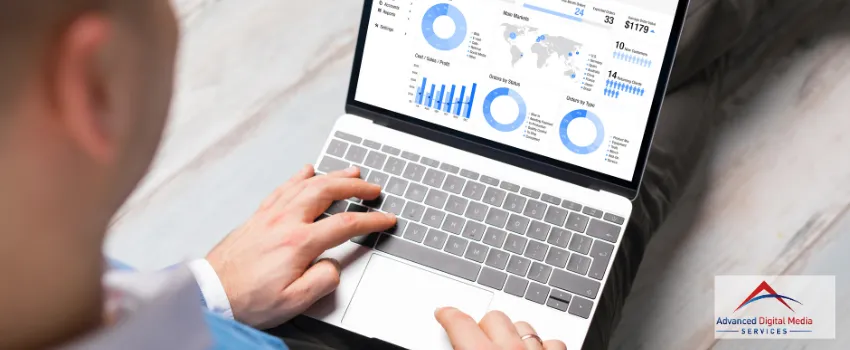According to studies, people retain 80% of what they see visually compared to just 20% of what they read. To optimize your search engine optimization (SEO) results, leveraging infographics for link building is a strategy you should pay attention to. SEO infographics captivate viewers, increasing shares, backlinks, and overall engagement.
Infographics have gained popularity on the internet as a powerful medium to raise awareness about your business and practices quickly. Leveraging their appeal can also contribute to link building success by attracting valuable backlinks and increasing your online visibility.
Why Infographics Matter
Visual content, such as infographics, is crucial in today’s digital landscape. With attention spans becoming shorter and information overload being a common challenge, infographics offer a simplified way to convey complex concepts.
Infographics effectively break down concepts and topics into digestible visual representations by combining images, icons, and concise text. These visual aids make the content more engaging and enhance understanding and retention.
With their visually appealing format and easy-to-read structure, infographics are a powerful tool for communicating information effectively. They captivate audiences in an increasingly competitive online environment.
Are Infographics Good for SEO?
Infographics for SEO can positively impact search engine optimization. Infographics provide a visually appealing way to present information, making it more engaging and shareable.
When properly optimized, SEO infographics can attract more visitors to a website, increase user engagement, and improve overall SEO performance. They have the potential to generate backlinks from other websites, which can enhance the website’s authority and visibility in search engine results.
Furthermore, infographics can be easily shared on social media platforms, expanding their reach and driving more traffic to the website. In summary, incorporating infographics for SEO can be a valuable strategy to boost online visibility and improve search engine rankings.
How Do I Create an Infographic for SEO?

When creating infographics for SEO, you can follow these steps:
1. Identify a topic or information relevant to your SEO goals.
Determine the specific subject matter that aligns with your SEO objectives. It can be about explaining a concept, showcasing data, or providing tips and insights related to your industry.
2. Gather accurate and compelling data related to the topic.
Conduct thorough research to collect reliable data and statistics that support the information you want to convey through the infographic. Ensure the data is from reputable sources to maintain credibility.
3. Organize the data logically and visually appealingly.
Structure the information logically, arranging it in sections or categories. Consider using a visual hierarchy that guides viewers’ attention and makes the content easy to understand.
4. Use icons, charts, and graphs to present information engagingly.
Visual elements like icons, charts, and graphs help simplify complex data and make it more accessible. Choose visuals that align with your content and enhance the overall design and readability of the infographic.
5. Optimize the infographic for SEO by incorporating targeted keywords.
Research relevant keywords related to your topic and strategically include them in the infographic’s title, headings, and captions. This optimization can help improve the infographic’s visibility in search engine results and attract organic traffic.
6. Keep the design simple, clean, and easy to understand.
Aim for a visually appealing design that is manageable. Use colors, fonts, and layouts that complement the content and maintain a cohesive visual style. Check that the text is readable and the graphics are clear and concise.
7. Ensure the infographic is mobile-friendly.
Optimizing your infographic for mobile viewing is crucial with the increasing usage of mobile devices. The design must be responsive and adapt well to different screen sizes, guaranteeing a positive user experience for all devices.
8. Promote the infographic through various channels.
Share the infographic on your website, social media platforms, and relevant industry websites. Reach out to influencers or websites that find your infographic valuable and encourage them to share it, generating backlinks and expanding their reach.
9. Encourage sharing and engagement.
Make it easy for viewers to share the infographic by including social sharing buttons or providing embed codes. Encourage engagement by asking viewers to comment, ask questions, or share their thoughts on the infographic’s content.
10. Monitor the performance of the infographic.
Utilize analytics tools to track metrics such as views, shares, backlinks, and conversions. Analyze this data to gain insights into how well the infographic performs and make necessary adjustments to optimize its effectiveness.
Once you learn how to use infographics for SEO with these detailed steps, you can create content that effectively communicates your message, attract traffic, and contribute to your overall search engine optimization efforts.
Why Link Building Is Key to SEO Success
SEO infographics play a vital role in link building, which is the key to success in SEO. Here’s why link building is crucial:
1. Link building helps establish authority and credibility.
Every time reputable websites link to your content, search engines view it as a vote of confidence, indicating that your website provides valuable information. This improves your website’s credibility and authority in the eyes of search engines.
2. Link building increases organic traffic.
Backlinks from high-quality websites drive referral traffic to your website. When users click on these links and land on your website, it increases your organic traffic, leading to potential conversions and revenue.
3. Link building enhances search engine rankings.
Search engines consider the quantity and quality of backlinks as a ranking factor. Acquiring relevant and authoritative backlinks improves your website’s chances of ranking higher in search engine results pages (SERPs).
4. Infographics are linkable and shareable.
Infographics are highly shareable due to their visually appealing nature. When you create informative and visually compelling infographics, other websites and bloggers are likelier to link to your content, providing valuable backlinks.
5. Infographics attract attention and engagement.
Infographics are eye-catching and make complex information easier to understand. They grab users’ attention and encourage them to spend more time on your website, reducing bounce rates and increasing engagement metrics.
6. Infographics can be used as link-building assets.
Creating and promoting high-quality infographics increases the chances of earning backlinks from other websites. Infographics serve as valuable assets that other websites want to share, thus naturally building links to your website.
7. Infographics aid in content promotion.
When you create SEO infographics, you can leverage them for content promotion strategies. You can establish infographic link building opportunities by reaching out to relevant websites, influencers, or industry publications.
8. Infographics provide value to users and websites.
Infographics present information in a visually appealing and easily digestible format. They provide value to users by simplifying complex concepts, and in return, websites find them valuable to link to as they enhance their content.
By link building infographics, you can enhance your SEO efforts, improve your website’s visibility, and attract more organic traffic. Incorporating infographic link building into your content strategy is a powerful way to generate backlinks, increase engagement, and achieve long-term success in SEO.
The Perks of Using Infographics in Building Links
Infographics for SEO offer significant advantages in link building and audience engagement. Here are a few of them:
1. Effortless Information Delivery
Audiences appreciate easily accessible and digestible content, making infographics valuable for delivering relevant and easy-to-understand statistics. With infographics, you can present complex information in a visually appealing format that is effortless for viewers to comprehend.
Infographics simplify information delivery by condensing data and using visual elements, allowing audiences to grasp key insights quickly. This effortless information delivery saves time and increases engagement and retention, making infographics an effective tool for communicating your message to various audiences.
2. Easier to Republish
Infographics can be shared effortlessly by copying and pasting embed codes. This shareability enables wider distribution and potential for viral sharing.
3. Enhanced Branding
Engaging infographics signify an influential and trustworthy source of information, strengthening your brand’s image and credibility. This enhanced branding can increase brand awareness, customer trust, and loyalty.
4. Organic Audience Sharing
SEO infographics are more likely to be shared by audiences naturally, contributing to improved SEO rankings and generating valuable backlinks to your website.
How Do You Create an Infographic Link Building Campaign?

Using infographics for SEO and link building can drastically boost your website’s visibility and attract quality backlinks. Here are the essential steps to create an infographic link building campaign:
1. Identify your target audience and goals.
Determine who you want to reach with your infographics and what specific goals you aim to achieve. Example goals include increasing backlinks or driving referral traffic.
2. Research and choose a relevant topic.
Link building infographics involve finding a topic that aligns with your target audience’s interests and relates to your industry or niche. Ensure it provides valuable information or solves a problem.
3. Collect reliable data and statistics.
Gather accurate data and statistics that support your topic. Use reputable sources to maintain credibility and ensure the information is up to date.
4. Design an engaging and visually appealing infographic.
Create a visually compelling design that presents the information clearly and organized. Use icons, charts, and graphs to enhance understanding and make the infographic visually appealing.
5. Optimize the infographics for SEO.
Include relevant keywords in the infographic’s main title, headings, captions, and alt tags. This optimization helps search engines understand the content and improves its visibility in search results.
6. Publish and promote the infographic.
A crucial step in link building infographics is spreading them to your audience. Share it on your website through various channels, including social media, industry-specific websites, and outreach to relevant influencers or bloggers.
7. Reach out for backlink opportunities.
Contact relevant websites or bloggers in your industry and offer the infographic as a valuable resource. Explain how it can benefit their audience and provide a link to your website.
8. Track and analyze the campaign’s performance.
Monitor the performance of your infographic link building campaign using analytics tools. Measure metrics like backlinks, referral traffic, and engagement to assess the campaign’s success.
9. Update and repurpose your infographics.
Over time, update your infographics with new data or create new infographics on related topics. Repurpose existing infographics into different formats, such as slideshows or videos, to reach new audiences.
By following these steps, you can create a compelling infographic link building campaign that attracts backlinks, increases your website’s visibility, and drives targeted traffic.
Key Takeaway
When you learn how to use infographics for link building, you unlock a powerful strategy to enhance your website’s visibility and attract quality backlinks. By creating visually appealing and informative infographics, you can capture your target audience’s attention and encourage them to share and link to your content.
Infographics simplify complex information and make it more engaging, increasing user engagement and reducing bounce rates. Through strategic promotion and outreach, you can leverage infographics to expand your reach and attract backlinks from reputable websites. All in all, link building infographics can improve your website’s SEO performance and drive organic traffic.
Take your website SEO to new heights with Advanced Digital Media Services.
Stand out and elevate your website SEO with Advanced Digital Media Services. As a leading provider of SEO in Colorado Springs, we specialize in optimizing your online presence to drive organic traffic and boost search engine rankings.
With our expertise and tailored strategies, we can help your business achieve higher visibility, increased website traffic, and improved conversions. Keep your website from getting lost in the digital noise. Contact us today and unlock your full potential.





